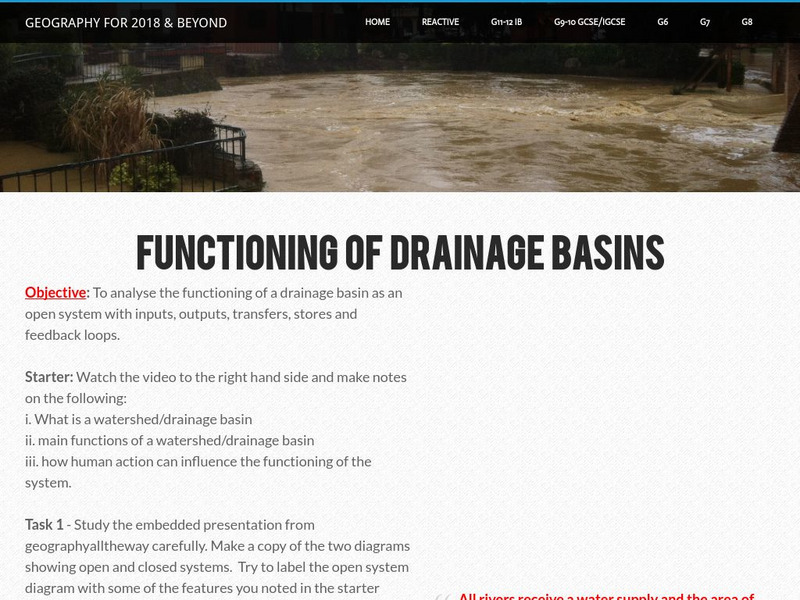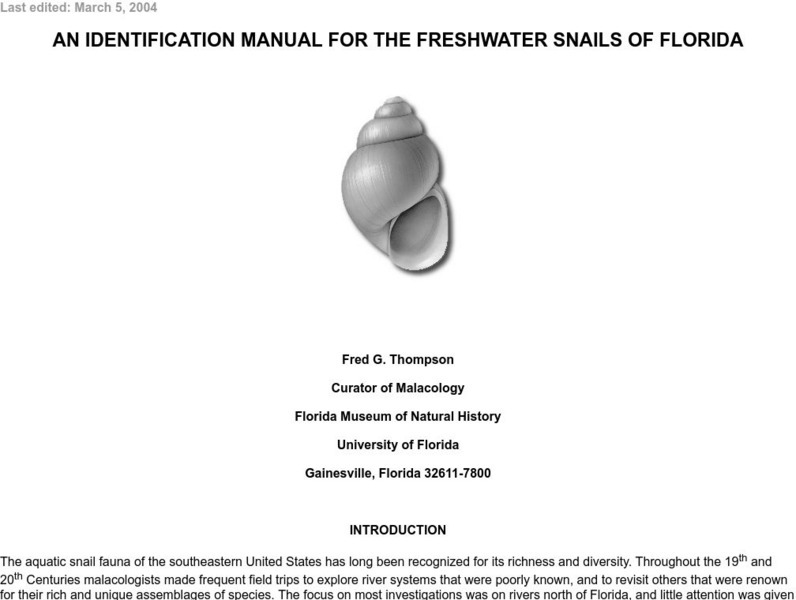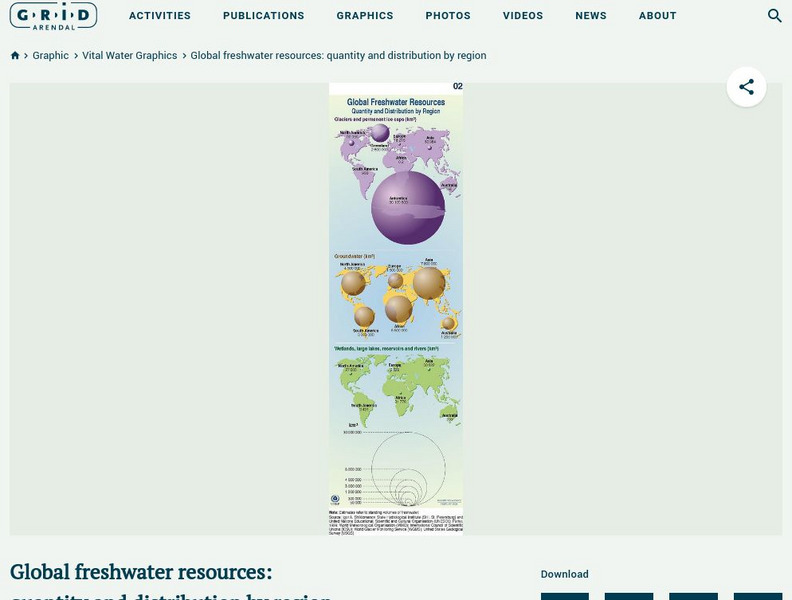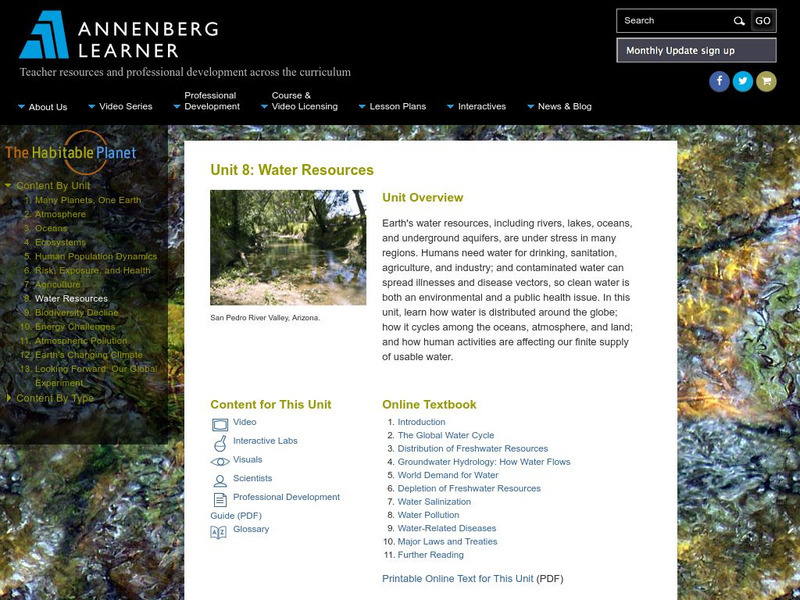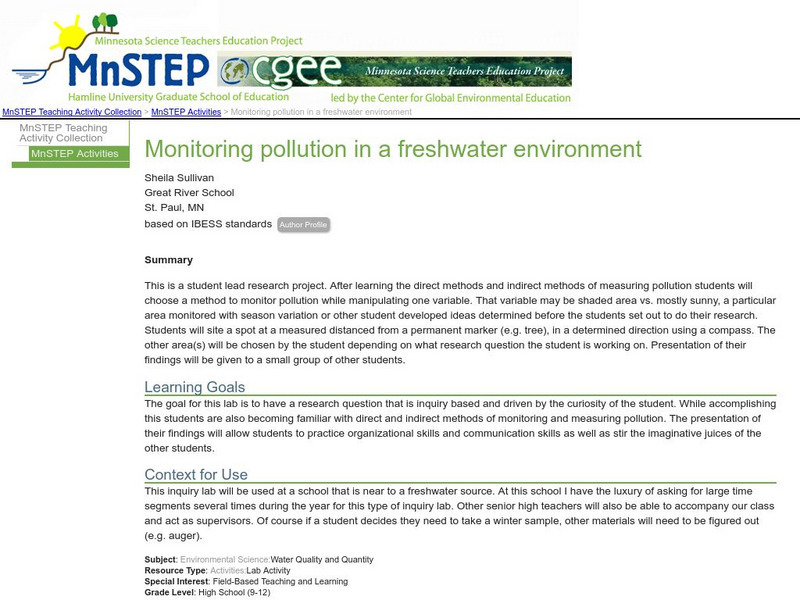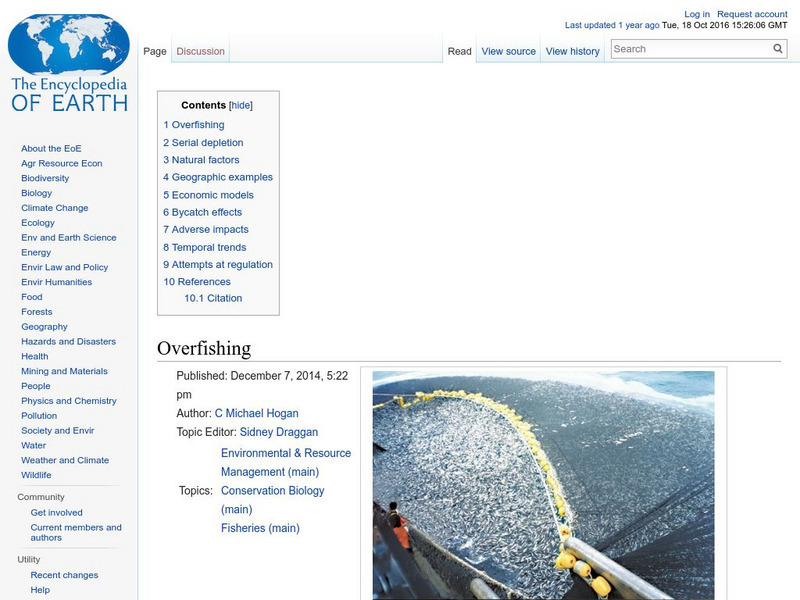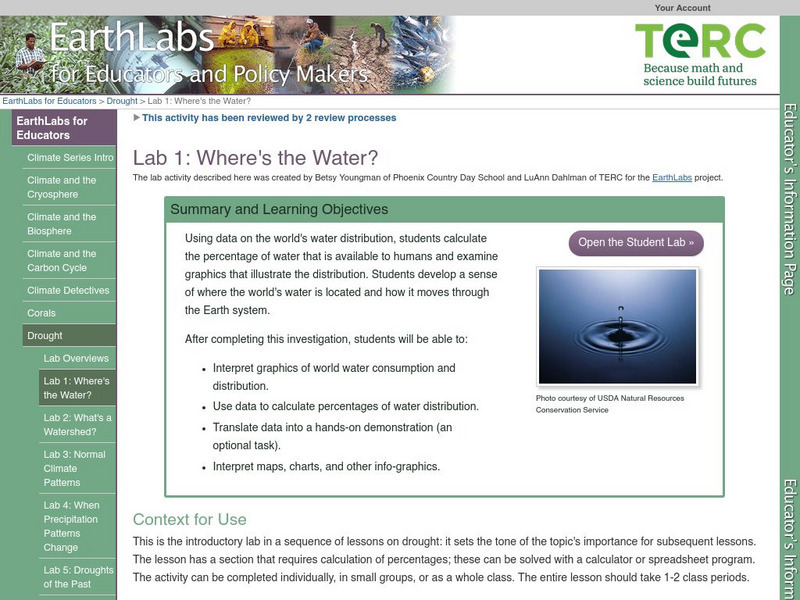Biology Pages
Kimball's Biology Pages: Freshwater Ecosystems
A reference page describing freshwater ecosystems, lakes, ponds, and rivers.
Sophia Learning
Sophia: Freshwater Biomes: Lesson 2
This lesson will provide an understanding of the characteristics and role of freshwater biomes, and its effect on living things. It is 2 of 4 in the series titled "Freshwater Biomes."
Other
Structurae: Functions & Uses: Fresh Water Dam
Site provides a database of over 90 Fresh Water Dams. Users are provided with an image of each dam as well as additional technical information.
BiologyWise
Biology Wise: Freshwater Biome Plants
Brief overview of types of freshwater biomes and the plants that live in them, as well as adaptations that plants have made in order to survive there.
Geographypods
Geographypods: Freshwater: Issues and Conflicts: Drainage Basins and Flooding
In this learning module, students learn how a watershed or drainage basin functions and the impact of human activities on them. Also covers groundwater, stream discharge, hydrographs, and the 2010 floods in Pakistan. Includes rich...
University of Florida
Ufl: Fieldguide to the Freshwater Snails of Florida
This is a on-line version of "The Freshwater Snails of Florida, A manual for Identification." Basically the site just tells how to identify the different types of freshwater snails in Florida.
Other
Grid Adrenal: Global Freshwater Resources: Quantity and Distribution by Region
Glaciers and icecaps contain approximately 70% of the world's freshwater, but groundwater is by far the most abundant and readily available source of freshwater. This graphic illustrates the quantity (in cubic kilometres) and...
Ducksters
Ducksters: Science for Kids: Freshwater Biome
Kids learn about the freshwater aquatic biome. Ecosystems such as rivers, streams, ponds, lakes, wetlands, swamps, and bogs.
Annenberg Foundation
Annenberg Learner: Water Resources
Freshwater accounts for only some 6 percent of the world's water supply, but is essential for human uses such as drinking, agriculture, manufacturing, and sanitation. As discussed above, two-thirds of global freshwater is found underground.
NASA
Nasa: Climate Kids: Gallery of Fresh Water
A collection of images showing both water shortage conditions and water conservation efforts.
US Geological Survey
Us Geological Survey: Glaciers and Ice Caps: Storehouses of Fresh Water
Locate glaciers and ice caps on a world map at this USGS site. Read about the formation of galciers and other interesting facts. Learn about the effects glaciers have on the landscape, and of their importance for our fresh water supplies.
US Navy
Onr: Saltwater vs. Freshwater, Which Is Denser?
This site contains an experiment on how to find out which has more density -- freshwater or saltwater.
Other
Freshwater Ecology
This is a comprehensive and detailed site providing information on aquatic macroinvertebrates. The emphasis is on biomonitoring of water quality through quantitative assessment of numbers and types of small aquatic organisms.
American Institute of Biological Sciences
Action Bioscience: The Decline of North American Freshwater Fishes
An article addressing the need of immediate action to repair damages of declining life in the ecosystems of North American inland bodies of water.
Science Education Resource Center at Carleton College
Serc: Monitoring Pollution in a Freshwater Environment
During this research project, students will choose either the direct method or the indirect method to monitor and measure pollution while manipulating one variable. They will develop a research question to work on and present their...
University of Massachusetts
University of Mass.: Freshwater Mussel Reproduction
This site, which is provided for by the University of Massachusets, gives a very good example of a typical bivalve reproductive cycle.
TeachEngineering
Teach Engineering: One World Ocean
In this activity, students learn about ocean currents and the difference between salt and fresh water. They use colored ice cubes to see how cold and warm water mix and how this mixing causes currents. Also, students learn how surface...
eSchool Today
E School Today: Your Cool Basics on Water Shortage
Despite seventy percent of the world's surface being covered with water, there is a potential shortage of this natural resource. Only a small percentage is fresh water and much of that is inaccessible or threatened. Learn about fresh...
Utah Education Network
Uen: A Drop in the Bucket: Usu Water Cycle
Learn about the different sources of fresh water.
Encyclopedia of Earth
Encyclopedia of Earth: Conservation Biology: Overfishing
Article describing the scope of the problem of overfishing in the ocean and in fresh water bodies around the world. Adverse effects of this practice on both natural and human systems, and efforts to contain it are detailed. (Published:...
Microscopy UK
Microscopy Uk: The Smallest Page on the Web
Dive into a single drop of pond water to discover the microscopic world of freshwater organisms. Learn about protists, bacteria, and other tiny inhabitants that can only be seen under a microscope.
Science Education Resource Center at Carleton College
Serc: Lab 1: Where's the Water?
A lab experiment in a series of experiments that explores drought. Here students look at the availability of world's fresh water by investigating graphics and analyzing data to see where the world's water supply is going.
TeachEngineering
Teach Engineering: Natural and Urban Stormwater Water Cycles
Through an overview of the components of the hydrologic cycle and the important roles they play in the design of engineered systems, students' awareness of the world's limited fresh water resources is heightened. The lesson lays the...
University of Utah
University of Utah: Genetics Science Learning Center: Stickleback Evolution
Compare the freshwater stickleback with its saltwater relative and trace the evolutionary changes of the fish. Includes a lecture by Dr. David Kingley, as well as an animation showing the evolution of the stickleback in an Alaskan lake.






